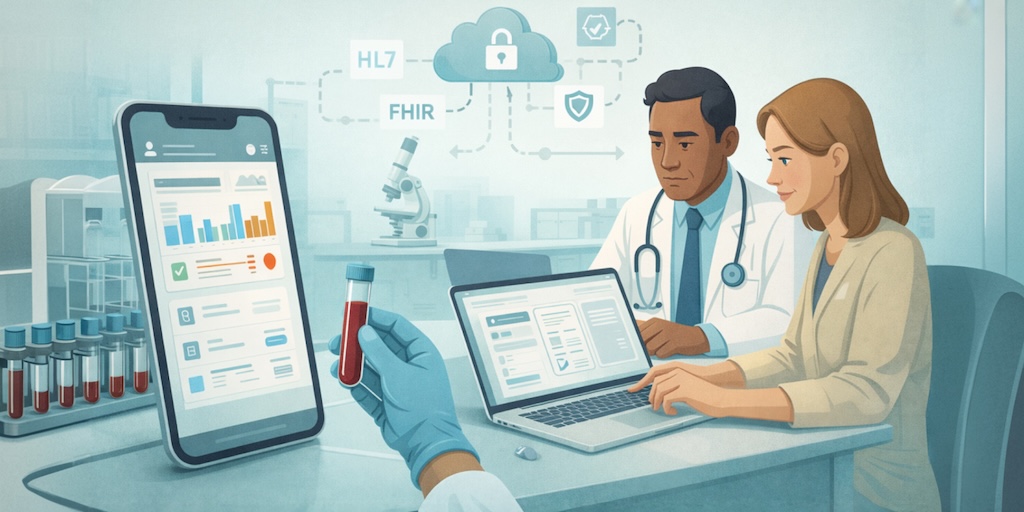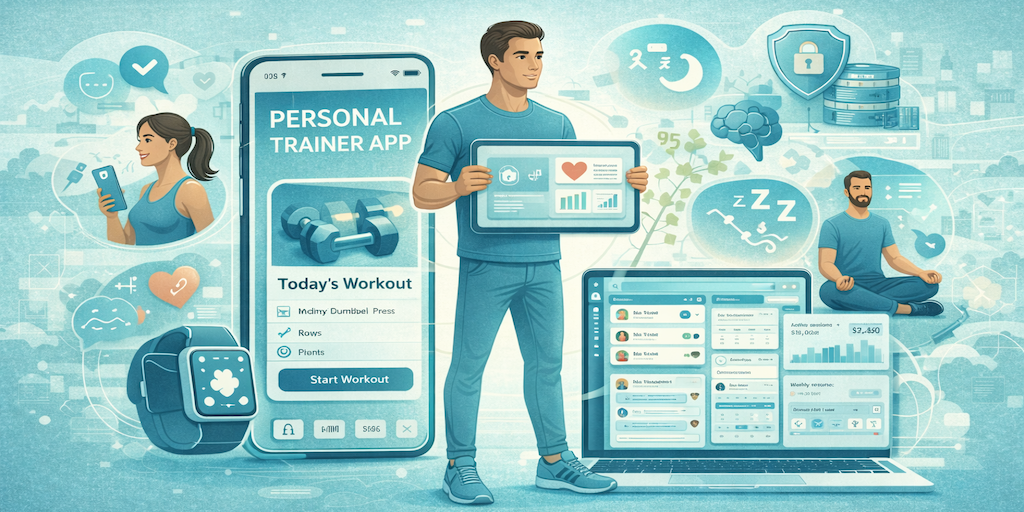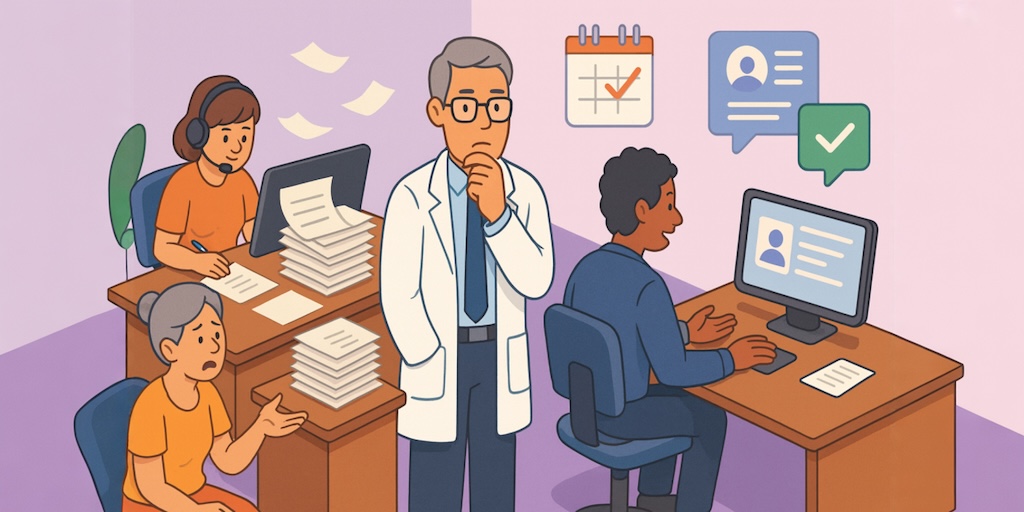How to Develop a Home Health Care App in Weeks (Not Fiscal Quarters)
You hear home health care app development and three browser tabs pop up in your head: ROI math, HIPAA landmines, and “do we even have the staff to roll this out?” Meanwhile patients expect fewer phone tags, caregivers need less swivel-chairing, and payers want cleaner documentation yesterday.
The playbook that actually works isn’t heroic custom code—it’s assembling proven, compliant pieces, bending them to your workflows, and piloting with one service line to earn trust fast. Weeks, not quarters.
Instrument everything, ship the smallest thing that moves the needle, and double down where the data says so. If you’re allergic to procurement theater and tech debt cosplay, you’ll like what’s next: practical steps, guardrails your auditors will love, and a path to value your team doesn’t have to “learn.”
Key Takeaways
- Assemble > reinvent: use Specode’s HIPAA-ready components and healthcare AI builder for the undifferentiated plumbing; spend budget on workflow fit, measurable outcomes, and time-to-value.
- Interoperability is ROI: Treat EHR, eligibility, payments, EVV, and messaging as first-class product features; clean data round-trips cut admin time and speed cash flow.
- Evidence beats opinions: Launch narrow, track KPIs (EVV success, no-show delta, documentation timeliness, RPM adherence), ship small fixes weekly, then scale what works. Specode’s approach typically compresses timelines to weeks and keeps code ownership while staying audit-ready.
Why Build a Home Health Care App in 2025
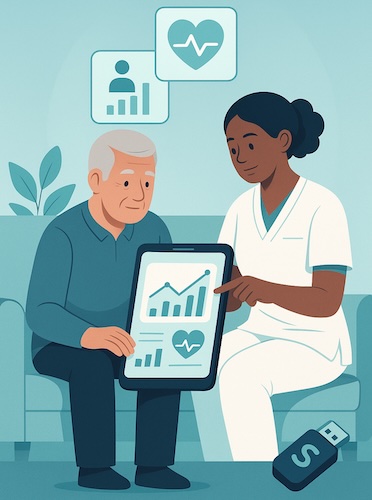
If you run a home health agency or you’re a clinician-founder, 2025 has handed you both a gift and a deadline. The gift? A $107B U.S. home healthcare market growing at 7.4% CAGR — some analysts even peg it at 12–13% for certain segments. The deadline? Aging demographics, chronic disease, policy headwinds, and patient expectations are converging in a way that will punish those who stay analog.
The math is hard to ignore. Nearly 90% of seniors want to age at home; 76% of adults have at least one chronic condition; and more than half of your future patients will have two or more comorbidities. Add Medicare’s shift toward value-based reimbursements and a persistent caregiver shortage, and the old “clipboard and phone call” workflow just can’t keep up.
If chronic conditions are a big part of your caseload, a chronic care management app that actually generates revenue can turn coordination into something sustainable.
That’s where this healthcare app development guide comes in. We’ll unpack how home health care app development — done right — turns those market pressures into opportunities: lowering costs, boosting patient engagement, and future-proofing your operations.
The digital shift is already underway:
- Mobile health (mHealth) adoption is mainstream — 43% of U.S. consumers use healthcare apps for tasks like medication management and appointment scheduling.
- Telehealth now drives up to 54% of encounters in certain settings, cutting missed appointments by 58% and saving $235 per encounter.
- Remote patient monitoring (RPM) is in place at 76% of healthcare organizations, saving $5,240 per patient annually and reducing readmissions by up to 50%
Even the financials tell a clear story: full-time home health care costs ~$77K annually per patient versus $667K for traditional hospital inpatient care — up to an 88% reduction.
In this guide, we’re not going to drown you in developer-speak. You don’t need a crash course in React or Python — you need a clear path to healthcare application development that balances compliance, usability, and ROI. And thanks to modular platforms like Specode, you don’t have to “start from scratch” to get there.
We’ll walk you through:
- Where the market is headed and why the timing is right
- Which features actually move the needle for patients, caregivers, and your bottom line
- How to build HIPAA-compliant, interoperable apps without multi-year timelines
- Cost drivers and realistic ROI projections
The goal: help you move from idea to impact — faster, with fewer risks, and with a solution that actually fits the way you deliver care.
The Strategic Role of a Home Health Care App
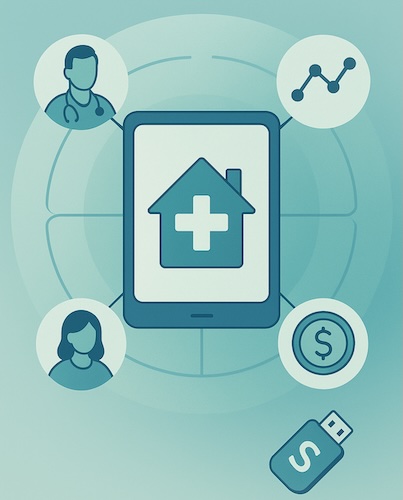
If the first wave of digitization in healthcare was about electronic health records, the second wave — happening right now — is about bringing the home care software solution directly into the patient’s living room (or onto their caregiver’s phone).
For agencies and clinician-founders, the role of a modern app isn’t “nice-to-have” anymore. It’s the central nervous system of your operations.
Solving the Real Pain Points
- Care fragmentation: Without a unified platform, patient information is scattered across paper notes, texts, and siloed systems. A well-designed app centralizes care plan management so everyone — from visiting nurses to case managers — works from the same playbook.
- Manual overhead: Scheduling, visit verification, billing — these are still done manually in many agencies. Automating them with cloud-based healthcare tools frees up clinical time for patient care instead of admin grind.
- Communication gaps: Missed voicemails and unclear instructions erode trust. Secure in-app messaging and notifications bridge the gap instantly.
Building Competitive Advantage
A strategically built app can be a differentiator in three critical areas:
- Patient satisfaction: Patients get transparency into their care plan, can book visits, and receive medication reminders. That autonomy drives engagement and adherence.
- Operational efficiency: Real-time visit verification, automated documentation, and route optimization reduce wasted miles, hours, and payroll leakage.
- Retention — of patients and staff: Burned-out caregivers leave. Digital tools that make their jobs easier keep them around longer, and satisfied patients stay loyal.
Where the Market Is Still Underserved
Despite the surge in app adoption, many solutions remain either:
- Too generic (repurposed from unrelated industries)
- Too rigid (locked into workflows that don’t match how home health actually operates)
- Too fragmented (lacking healthcare interoperability with EHRs, labs, and payers)
This is where knowing how to build a home health care app from scratch — or more realistically, from proven, customizable components — becomes a competitive advantage. You get a solution that aligns with your exact care delivery model while plugging seamlessly into the systems you already use.
Defining Your App’s Core Capabilities
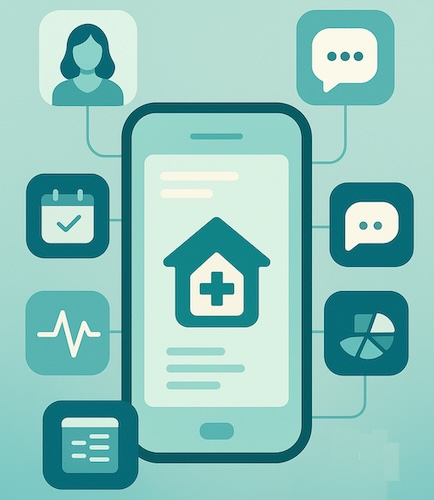
Before you even think about budgets or timelines, you need clarity on the features of a home health care application that will actually move the needle. The goal isn’t to build a bloated, “everything for everyone” app — it’s to create a lean, high-impact tool that serves patients, caregivers, and your agency without introducing friction.
Patient-Facing Essentials
This is where the user experience is won or lost. Patients need tools that make care accessible, transparent, and convenient:
- Patient portal for real-world adoption for viewing care plans, lab results, and progress notes.
- Appointment booking with self-service rescheduling and reminders.
- Secure messaging to reach care teams without playing phone tag.
- Medication reminders that go beyond alarms — with confirmations to ensure adherence.
- Remote monitoring integrations for vitals and symptom tracking.
Caregiver Tools
Your app should be a command center in a caregiver’s pocket, streamlining their daily workflow:
- Shift scheduling and route optimization to reduce travel time.
- Electronic visit verification (EVV) to meet payer compliance requirements and cut down on disputes.
- Patient notes that update in real-time and sync across the care team.
Agency & Operations View
What executives and managers need isn’t just data — it’s actionable oversight:
- Staff management dashboards to monitor capacity and performance.
- Integrated billing and claims submission.
- Compliance tracking with audit-ready reporting.
- Analytics on patient outcomes, visit efficiency, and cost per episode of care.
Optional Advanced Features
Once the basics are solid, you can layer in advanced capabilities to expand value:
- EHR integration for seamless data exchange with provider networks.
- Pharmacy links for direct prescription management.
- Wearable data ingestion to track activity, sleep, and other wellness metrics.
When these capabilities are built into a single, interoperable system, you don’t just get a “home health app.” You get a platform that unifies every touchpoint in the care journey, reduces admin drag, and scales with your agency’s growth.
Designing for Adoption: UI/UX in Healthcare
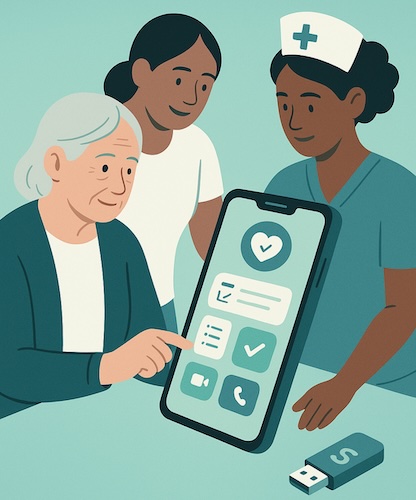
Even the most feature-rich home health care mobile app will fail if no one actually uses it. Adoption isn’t just about making something “look nice” — it’s about making it frictionless for patients, caregivers, and admins to get value from day one.
Accessibility & Simplicity for Multi-Age Users
Home health isn’t a single-demographic game. You might have an 82-year-old patient logging vitals, a 45-year-old family caregiver checking schedules, and a 28-year-old nurse entering visit notes — all within the same system.
- Large, high-contrast touch targets and clear navigation paths.
- Adjustable text sizes and screen reader compatibility for vision-impaired users.
- Plain language instead of medical or tech jargon.
Mobile-First, Offline-First, and “Zero Training” Principles
For any mobile app for home health agencies, design has to reflect the realities of the field:
- Mobile-first means your core workflows — caregiver scheduling, visit documentation, patient updates — are fully optimized for phones and tablets.
- Offline-first ensures caregivers can still log visits, update notes, and even capture signatures in areas with poor connectivity.
- “Zero training” means the interface is so intuitive that staff can pick it up and navigate without a manual.
Mapping Workflows to App Screens
Adoption skyrockets when your app mirrors the real-world sequence of tasks.
- Video consultation features should be just one tap away from a scheduled appointment — not buried behind menus.
- Telemedicine features like vitals capture or symptom questionnaires should auto-attach to the patient record without extra uploads.
- Care plans, medication lists, and visit history should be no more than two taps from the home screen.
When the app reflects actual workflows — not just a designer’s vision — it stops being “another system” and becomes the way work gets done. That’s when a mobile app for home health agencies shifts from a tech expense to an operational advantage — boosting efficiency, patient satisfaction, and staff retention.
Compliance, Security, and Trust

Compliance isn’t a feature; it’s your operating license. If you want adoption from payers, referral partners, and patients, HIPAA compliance in no/low-code app development has to be visible in the product, not buried in a policy PDF.
HIPAA & State-Specific Rules in Home Health
- Foundations: Privacy Rule, Security Rule, Breach Notification, and signed BAAs with every PHI-touching vendor (cloud, video, SMS, analytics).
- Minimum necessary + RBAC: Role-based access, least privilege, and time-boxed escalations for supervisors.
- 42 CFR Part 2 (when applicable): Extra consent/segmentation for SUD data.
- State overlays: Expect stricter provisions (e.g., CA CMIA, TX HB300, NY SHIELD). Align incident timelines, training, and disclosures with the strictest rule you operate under.
- Medicaid realities: If you bill Medicaid, ensure EVV and documentation flows meet payer audit expectations.
Data Encryption, Authentication, and Audit Trails
- Encryption: TLS 1.2+ in transit; AES-256 at rest (DB, object storage, backups). Avoid PHI in logs and push notifications.
- Identity & auth: OAuth2/OIDC, short-lived tokens, refresh rotation, device keychain storage, admin MFA by default; consider passkeys for staff.
- Platform hardening: Jailbreak/root detection, certificate pinning for high-risk flows, WAF, secrets rotation, and least-privilege infra roles.
- Audit trails (immutable): Log every access, view, create, update, export, and admin action; preserve hashes and timestamps. Make reports exportable for payer or regulator audits.
- Resilience: Encrypted backups, tested restore, defined RTO/RPO, and tabletop breach drills (who does what, when).
Building Trust Through Transparency
- Plain-English data use: In-app explanations of what’s collected and why; no dark patterns.
- Consent flows: Explicit consent for RPM devices, location, and data sharing; easy revoke.
- Patient rights: Fast access to digital health records, downloadable summaries (e.g., FHIR export), and clear correction/deletion pathways.
- Disclosure discipline: Incident playbook with pre-approved patient messaging; the way you communicate after an issue often matters more than the issue itself.
Exec litmus test: if a caregiver lost a phone today, could you (a) remote-wipe PHI, (b) prove data was encrypted, and (c) generate an audit report in under an hour?
Where Specode Fits
If you want HIPAA compliant healthcare app development without reinventing the wheel, start with components that already handle BAAs, encryption policies, consent, RBAC, and audit logging. Then tailor workflows on top. That’s faster to market and easier to defend in an audit.
Bottom line: Design compliance into the happy path. When your controls are native to the workflow, you reduce risk, speed payer onboarding, and earn durable patient trust.
Integration Requirements to Maximize Value
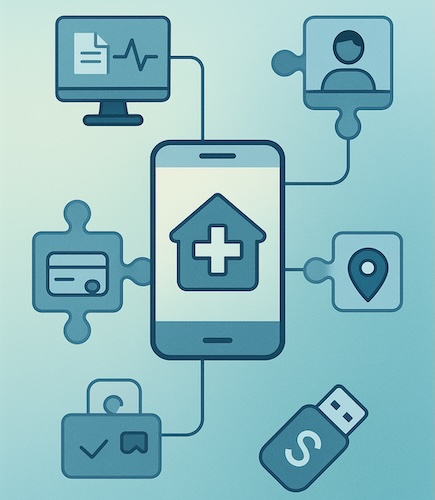
Integrations are the force multiplier. A home health app without EHR integration, API integration, and billing integration is just another inbox. Wire it into the ecosystem and it becomes the operating system for care. For telemedicine app development, the same rule applies: seamless data flow or it doesn’t count.
EHR/EMR Connectors and Interoperability
Your clinicians need the right data at the right moment — meds, problems, allergies, vitals, notes — without swivel-chairing between systems. That’s the job of robust EHR integration.
Well-designed connectors should:
- Support standards (e.g., FHIR/SMART patterns) with scoped, read/write permissions.
- Sync the essentials (care plans, encounters, orders, results) and reconcile conflicts with human-in-the-loop review.
- Use eventing (webhooks/queues) so visits, messages, and device data show up in near real time.
- Enforce consent, provenance, and full auditability on every record touch.
Why it matters: fewer duplicate charts, fewer missed meds, and a measurable drop in admin time per visit — the quiet ROI your finance lead actually notices.
Payments, Insurance Verification, and Billing
Revenue friction kills margins faster than any UI flaw. Treat financial rails as first-class product features and plan billing integration early.
- Eligibility & benefits: Real-time checks before the visit prevent denials later.
- Claims & remits: Clean, automated submission and status tracking — no manual rekeying.
- Patient pay: Card-on-file, ACH, and payment plans built into the visit flow (not tacked on).
- Documentation tie-in: Every billed unit maps to verified visits, notes, and signatures.
Bottom line: Cash flow improves when finance stops chasing paper and starts riding APIs.
Telehealth APIs, Mapping, and Notification Services
For modern home health and telemedicine app development, the “last mile” is digital.
- Video consults: HIPAA-ready video SDKs with waiting rooms, low-bandwidth fallbacks, and one-tap join from the schedule.
- Mapping & routing: ETA-aware routes, geofencing for visit windows, and proof-of-presence that doesn’t drain battery.
- Notifications: Transactional SMS/push that respect consent and surface the next best action (confirm visit, upload vitals, join call).
Why it matters: Fewer no-shows, tighter routes, and faster escalation when conditions worsen — all from the same pane of glass.
Exec Checklist (Sanity before You Scale)
- Can we add a new payer or EHR via API integration without a rewrite?
- Do clinical notes, orders, and results round-trip cleanly (no manual copy-paste)?
- Are claims, eligibility, and payments traceable back to verified visits?
- Do video calls, maps, and messaging work on poor networks and older devices?
- Can compliance generate an audit report (who saw what, when) in minutes, not days?
Design integrations like product features, not IT projects. If they’re modular and testable, you’ll ship faster now — and avoid the “week 13 surprise” that derails go-live.
Cost & Timeline: What to Expect in 2025
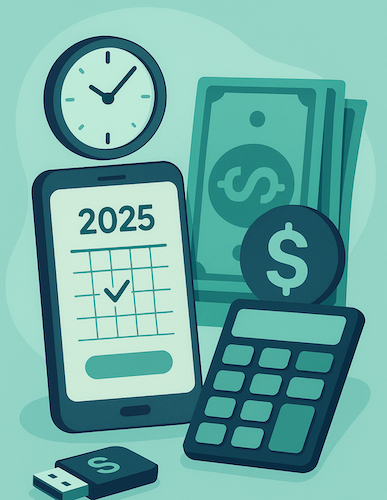
Budget is strategy with a price tag. Treat home health care app development cost as a portfolio decision, not a line item—your choices on scope, compliance, and integrations determine payback speed as much as any marketing plan.
What Drives Cost in 2025
In home health software development, four levers dominate the bill:
- Scope & Workflow Depth: A visit tracker is cheap; an end-to-end operating system (care plans, EVV, billing, analytics, RPM) isn’t. Decide what must be true on Day 1 vs. Day 90.
- Integrations (The Big Multiplier): EHR, claims/eligibility, payments, maps/geo, video. Each connector adds build/QA time and ongoing maintenance.
- Compliance Posture: HIPAA, audit trails, consent versioning, PHI minimization, data retention. Compliance isn’t optional—and it’s not “free.”
- Change Management: Training, SOP updates, pilot cohorts, and migration of legacy data. Agencies consistently underestimate this.
For home care agency software development, assume integrations and change management drive most variance—more than raw coding effort.
Typical Timelines: Custom vs. Modular
Custom (Greenfield, Multiple Integrations)
Expect quarters, not weeks—discovery, UX, build, QA, security, pilots, payer readiness. Great for unique workflows; slower to value.
Modular/Component-Based (Specode-Style)
Assemble proven building blocks (EVV, scheduling, secure chat, audit logging, payments, video) and tailor workflows. This path moves in weeks, not fiscal quarters, especially when integrations reuse hardened adapters.
If you prefer to develop healthcare app step by step, phase it deliberately:
- MVP for one line of service and one payer;
- Add high-ROI integrations (eligibility, payments);
- Expand to EHR and analytics;
- Scale to additional service lines/regions.
This phased approach contains risk while unlocking revenue earlier.
How Automation (Like Specode) Changes the Equation
Automation reframes both CapEx and time-to-value:
- Pre-Verified Components: HIPAA-ready auth, consent, RBAC, audit logs—less time on undifferentiated plumbing.
- Integration Adapters: Reusable connectors for EHR, eligibility, billing integration, and payments reduce the “unknowns tax.”
- Faster Pilots, Tighter Feedback Loops: Launch a controlled cohort fast; let real-world usage guide scope rather than speculation.
- Year-1 Cost Snapshot: Specode projects typically land around ~$15K–$65K in Year 1 depending on complexity and customization needs. (Direction-of-magnitude for planning; finalize after scoping.)
Executive Lens: In 2025, the cheapest path isn’t “do less,” it’s “reuse more”. If the platform already gives you EVV, scheduling, secure messaging, and claims rails, your remaining spend concentrates on the workflows that make your agency different. That’s how home health software development earns ROI fast—and keeps earning it.
Launch, Adoption, and Continuous Improvement
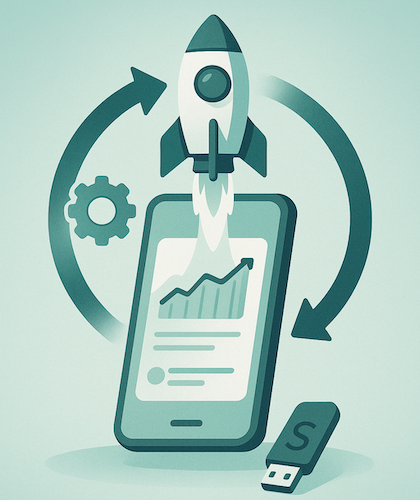
In patient care app development, launch isn’t a finish line; it’s the moment your workflows meet reality. Treat it like a clinical trial: small cohort, strong instrumentation, fast iteration.
Pre-Launch Testing With Staff & Pilot Patients
Start with one service line, a handful of caregivers, and 15–30 patients. Keep scope narrow—scheduling, notes, EVV, secure chat—so you can see signal without noise. If remote patient monitoring (RPM) is in scope, provision devices early and test consent + data flows on a mini group before general use.
Pilot blueprint (4 steps)
- Define who’s in (patients, caregivers, one supervisor), what “success” means, and what happens if the app goes offline.
- Seed the schedule for two weeks so everyone hits the system on day one.
- Run a 30-minute daily huddle for the first week; ship same-day fixes when possible.
- Freeze scope mid-pilot; log new ideas to a queue so you don’t thrash.
Signals to watch: time-to-first-action, EVV success rate, no-show delta, message response time, caregiver taps per task.
Adoption: Marketing & Provider Outreach
Hype doesn’t drive usage; trust does. Organize the rollout around the people who make or break the experience.
Staff Enablement
Train supervisors first, then caregivers. Keep materials one-page and job-specific. If your app doubles as a caregiver management app, say it plainly: schedules, routes, notes—one place.
Provider Partnerships
Give referring clinics a 60-second briefing, a hotline for escalations, and a one-pager they can hand to patients. The ask: “Use the app for scheduling and updates so we can move faster.”
Patient Onboarding
QR code + short explainer video + three nudges in week one. No jargon. Make the first useful action obvious: “Confirm tomorrow’s visit,” “Share vitals,” “Send your question.”
Visibility & Trust
Use real-time tracking for ETAs and visit completion where appropriate. When families can see progress, your support inbox gets quieter and satisfaction goes up.
Iterating Features Based on Real-World Feedback
Your pilot is the backlog generator. Pair quantitative funnels with a weekly 3-question pulse (“easier?”, “faster?”, “would you keep it?”). Ship small fixes continuously; bundle bigger changes between visit cycles.
Bottom line: Launch narrow, learn loud, then scale. The teams that win don’t chase features; they tighten the loop between field reality and product decisions.
How Specode Accelerates Home Health App Development
Specode turns the scary blank page into an assembly job. Instead of hiring a team to reinvent the same healthcare plumbing, you start with proven, HIPAA-ready building blocks and focus your time where it pays back—workflow fit and outcomes. Teams use Specode to ship in weeks, keep full code ownership, and iterate without vendor lock-in.
Modular, HIPAA-Compliant Components
Auth, RBAC, consent, audit trails, secure messaging, scheduling, EVV, notifications—these are pre-built and designed to work together. Compliance isn’t an afterthought; it’s baked into defaults so your first prototype is already audit-friendly.
AI Builder: Rapid Customization to Match Your Workflows
Build by chat—describe the intake → visit → follow-up you want and see it live instantly. Connect your own data early so screens, rules, and lists reflect real patients, payers, visit types, and teams. Fully brandable from day one.
When something is truly unique, switch to custom code without fighting the platform. You can also combine your team with ours on the Custom tier (managed help + optional purpose-built agents).
- EHR connectivity: flip on clinical data paths and keep your model in sync.
- Eligibility checks: surface payer rules at the right step to prevent denials.
- Telehealth UX: weave video, secure messaging, and scheduling into a single flow.
- Guardrails: Change Log restore and role-scoped testing keep fast iteration safe.
Don’t rebuild what exists—modify packaged components and add only what’s net-new to your home health workflows.
A Weeks-Not-Months Build Path (Scenario)
- Week 1: requirements & scope; align on care plans, EVV, secure messaging, and reporting.
- Weeks 2–3: design + assembly; wire EHR/eligibility/payment adapters; pilot on a single line of service.
- Week 4+: HIPAA checks, hardening, deployment; expand based on pilot signal. That’s how you move from idea to operating app on a fiscal-quarter budget—and keep iterating.
Bottom line: If you want to create home health care application value quickly, stop paying the “plumbing tax.” Use modular components where they’re undifferentiated, and spend your budget on the workflows that set you apart. That’s how teams build home healthcare app experiences that clinicians actually adopt, without pretending to start a home care app from scratch.
When you need a custom home health application—your rules, your reporting, your care model—Specode gives you the speed of assembly with the control of code. It’s the pragmatic way to develop home care application capabilities that survive the real world.
Skip the sales call—open Specode’s AI builder, explore EVV + scheduling + eligibility on HIPAA-ready rails, and keep going after a quick sign-in.
Frequently asked questions
Most teams stand up a single-service-line pilot in weeks by assembling core components, wiring priority integrations, and instrumenting the first cohort for rapid feedback.
No. You can assemble proven components, add custom code where you differentiate, and retain full code ownership without vendor lock-in.
Scope depth, number of integrations, compliance posture, and change management are the main levers; integrations and rollout planning usually dominate variance.
Encryption, RBAC, consent, audit trails, and breach workflows are designed into defaults, with BAAs in place for any PHI-touching vendor and exportable audit reports for reviews.
EHR for clinical context, eligibility and payments for revenue flow, EVV for payer compliance, and video/maps/notifications for telehealth logistics and caregiver efficiency.


